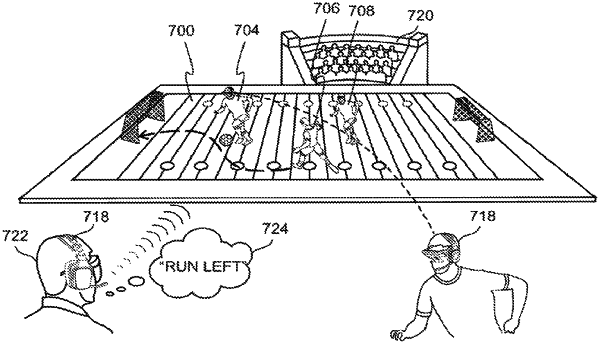| CPC A42B 3/30 (2013.01) | 3 Claims |

|
1. A computer implemented method of augmented reality assisted communication comprising:
receiving, at an augmented reality (“AR”) interface of a first headwear worn by a first user, a selection by the first user of a second user of a plurality of users, wherein each of the plurality of users are wearing a headwear and the plurality of users includes the first user, wherein the selection is at least one of a voice control, a touch control or based at least in part on determining a gaze direction of the first user;
establishing a position of the first user using a position tracker on the first headwear, wherein the position tracker is at least one of a geomagnetic sensor, an acceleration sensor, a tilt sensor, or a gyroscopic sensor;
sending, via the audio connection between the first headwear and a second headwear worn by the second user, a first audio data from the first headwear to the second headwear for output by the second headwear;
receiving at the first headwear and via the audio connection, a second audio data sent from the second headwear, wherein the second audio data is of the second user speaking; and
outputting at the AR interface of the first headwear visual information comprises a transcription of the second audio data.
|